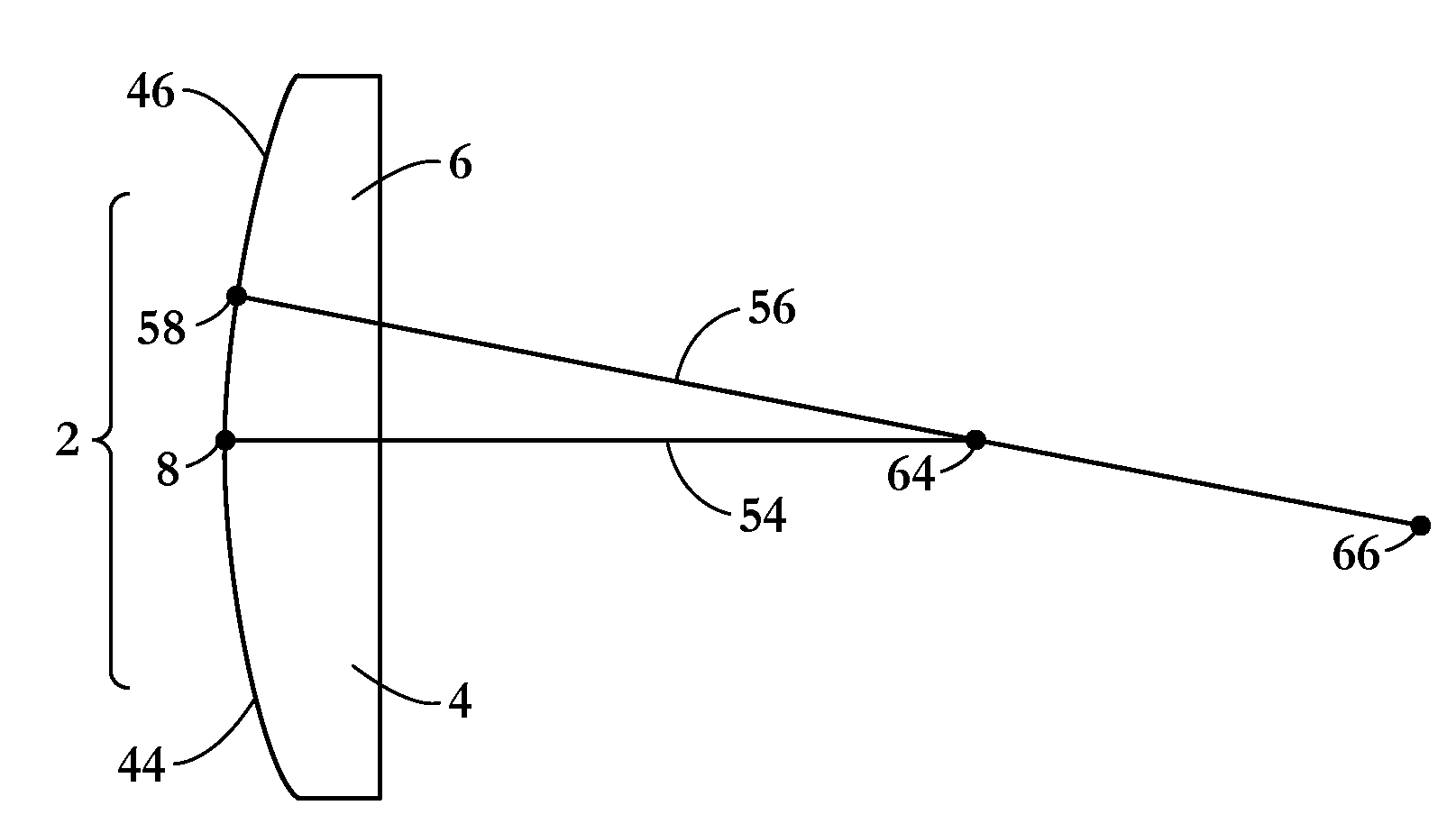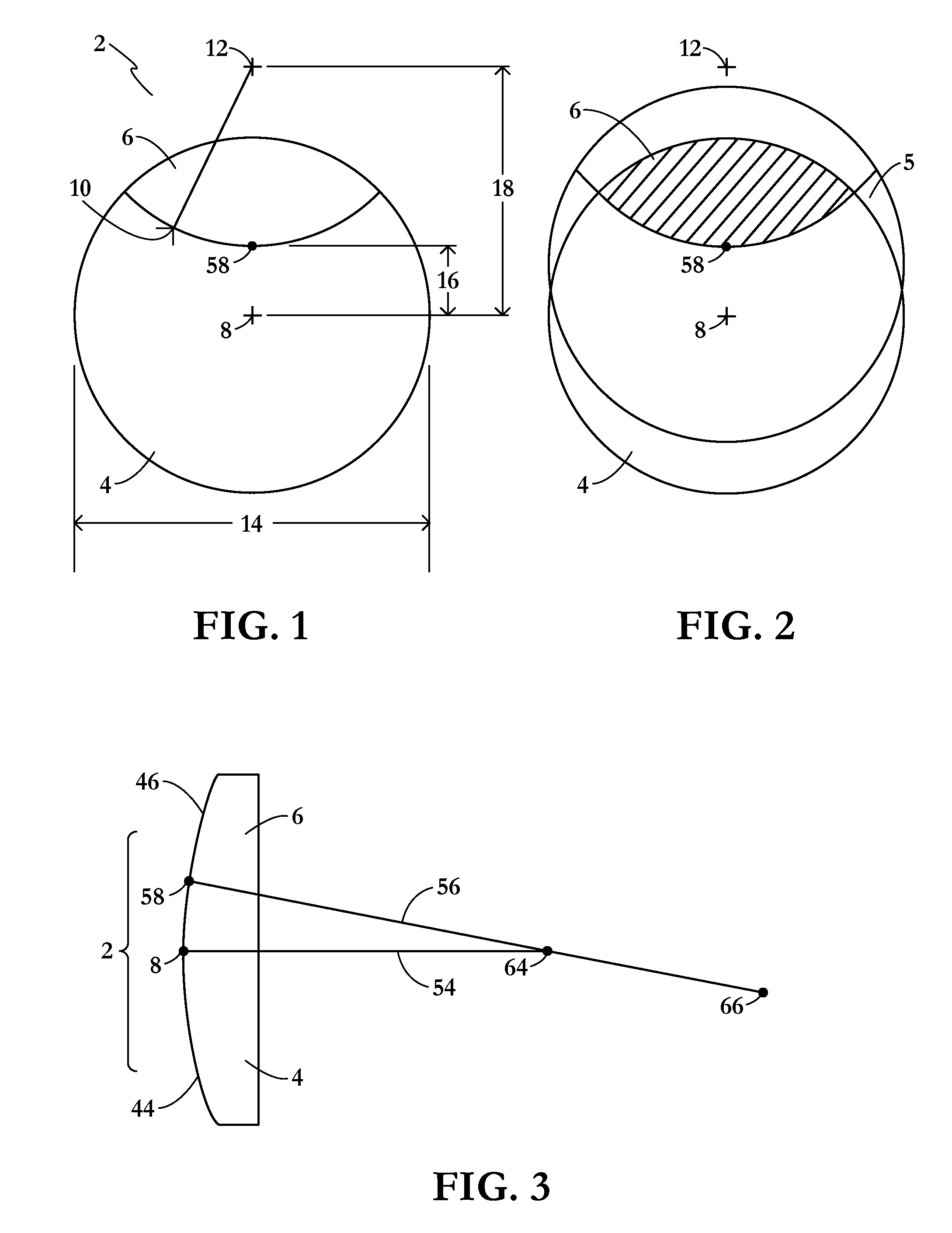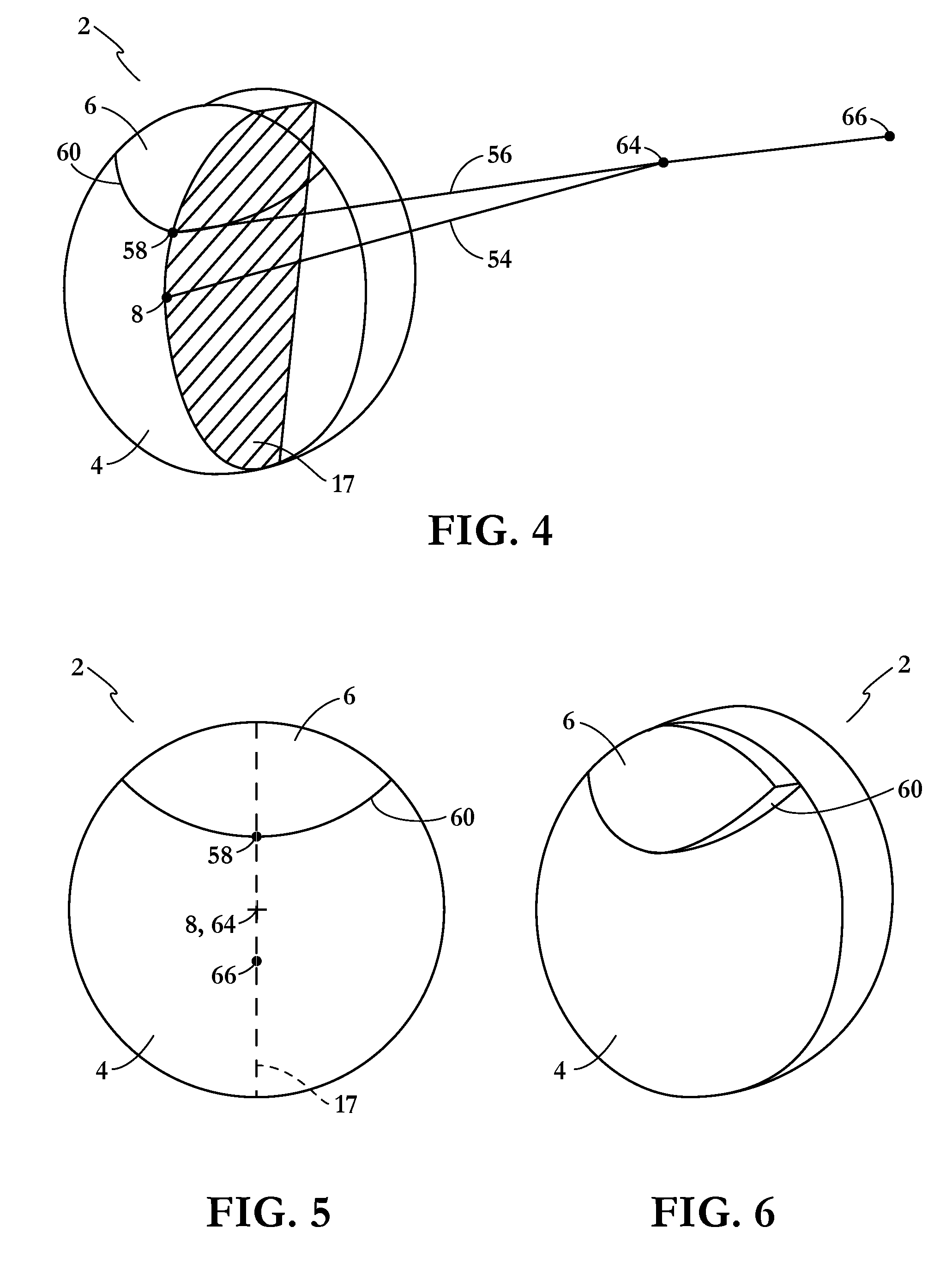Non-progressive multifocal lens with large near/intermediate area
a multi-ophthalmic lens, non-progressive technology, applied in optics, medical science, instruments, etc., can solve the problems of reducing the ability of the lens to focus on near images, increasing the diameter of the lens, and reducing the accommodative facility
- Summary
- Abstract
- Description
- Claims
- Application Information
AI Technical Summary
Benefits of technology
Problems solved by technology
Method used
Image
Examples
Embodiment Construction
[0027]In the following detailed description of exemplary embodiments of the invention, reference is made to the accompanying drawings that form a part hereof, and in which are shown by way of illustration specific exemplary embodiments in which the invention may be practiced. While these embodiments are described in sufficient detail to enable those skilled in the art to practice the invention, it will nevertheless be understood that no limitation of the scope of the present disclosure is thereby intended. Alterations and further modifications of the features illustrated herein, and additional applications of the principles illustrated herein, which would occur to one skilled in the relevant art and having possession of this disclosure, are to be considered within the scope of this disclosure. Specifically, other embodiments may be utilized, and other mechanical changes may be made without departing from the spirit or scope of the present invention. Accordingly, the following detail...
PUM
 Login to View More
Login to View More Abstract
Description
Claims
Application Information
 Login to View More
Login to View More - R&D
- Intellectual Property
- Life Sciences
- Materials
- Tech Scout
- Unparalleled Data Quality
- Higher Quality Content
- 60% Fewer Hallucinations
Browse by: Latest US Patents, China's latest patents, Technical Efficacy Thesaurus, Application Domain, Technology Topic, Popular Technical Reports.
© 2025 PatSnap. All rights reserved.Legal|Privacy policy|Modern Slavery Act Transparency Statement|Sitemap|About US| Contact US: help@patsnap.com



